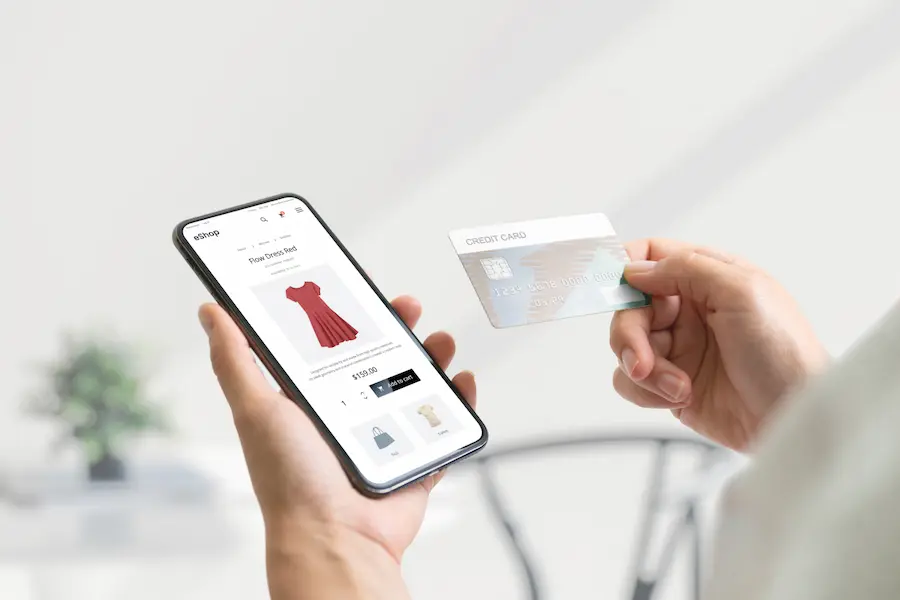In the modern-day rival market, all online sellers are looking for approaches to stand out and win customers' attention. They come up with two main questions. How could we enhance our selling processes? And how could we give a more engaging shopping experience? Modern visual CPQ solutions are capable of fulfilling these goals. This article will define visual CPQ, its benefits for vendors, and ways to implement it.

What is visual CPQ?
Visual CPQ is the next level of the traditional CPQ which indicates "Configure, Price, Quote." This sales tool helps companies configure complex items, determine precise prices, and produce final quotes. This approach covers several goals - to enhance the experience, accelerate the selling process, and downsize mistakes. Such a visualization level enables visitors to customize goods in real-time and watch for changes directly on the platform. Digital shopping has become more dynamic, engaging, and efficient.
Solutions for visual CPQ perform well for both consumer (B2C) and business (B2B) environments. They have equal goals in improving buyers' experience, but differences in context. For B2C, the focus is on delivering a personalized and engaging shopping experience and reducing cart abandonment. It can be furniture, vehicles, devices, home decor, etc. Meanwhile, for B2B, the emphasis is on handling complex configurations, providing accurate quotes, and supporting a longer sales cycle. These can be industrial machinery, equipment, and devices with specific features, building materials, and spare parts.
How does visual CPQ work?
The system workflow can be split into four main steps:
- Visitors of digital stores select desired products and customize them using available options for configuration.
- In parallel the internal algorithm applies pre-defined rules and logic to provide valid configurations and calculate accurate pricing as selections are made.
- When the configuration is finalized, the system automatically generates a quote that reflects the chosen options and calculated price.
- If the potential buyer is satisfied, the order is transferred to the sales manager for review.
Visual CPQ has a transformative impact on sales and shopping experience. This solution provides multiple benefits for both businesses and their consumers. The next chapter covers this topic in more detail.
Enhanced customer experience
Visual CPQ enables visitors to explore the product from different angles and configure it. In-depth interaction gives power to choose from colors, designs, and other available features. It fosters a more engaging and interactive buying experience. Obtaining an immediate and precise result makes your potential clients more confident and stimulates decision-making. They can see exactly what they're getting and how different options will impact the final product's look, functionality, and price.
An example is selling autos. Without leaving home, buyers might assemble the car online out of the available characteristics and see a lifelike sample.

Higher effectiveness of sales
Being a holistic instrument for sales teams, Visual CPQ allows you to increase overall effectiveness and productivity. It accelerates the sales cycle. Having the opportunity for real-time customization and quotation accuracy right at the moment, consumers decide about the purchase faster. As an effect, the conversion rates rise. Buyers are more prone to complete a purchase when they can visualize the item and configure it to their wishes.
Without having to perform operations manually, sales reps can concentrate on communication and finalizing the deals. Besides that, visual CPQ tools can showcase complementary or upsell options, while the visitor explores the primary one. Thus, the sales volume may increase. For example, a furniture retailer lets customers design their living room layout using furniture from the catalog. They might pick various items, arrange them in a virtual room, change parameters, and immediately see how everything looks together.
Improved accuracy
Automation of configuration and quoting processes has undeniable advantages.The CPQ solution mitigates the risks of potential mistakes in calculations and data entry. Built-in logic prevents incompatible and invalid configurations, ensuring their precision and feasibility. At the same time, the visual representation helps to guarantee that all components are properly fit with each other. And the final version meets the customer's requirements.
For example, manufacturers of custom windows and doors can use visual CPQ to guide consumers through the configuration process. All measurements and specifications must meet all structural requirements before processing the order. It minimizes errors and costly reworks.
Cost efficiency
Visual CPQ solutions deserve the status of being cost-efficient. Primarily, they eliminate the need for physical samples and prototypes. Imaging customers choosing kitchen fittings. It is costly to make samples for each case. With visual CPQ they can experiment with different designs, until they get a completely satisfying result and then make an order. Here is one more “cost” benefit hidden. Accurate quotes from the onset minimize the need for later order changes or cancellations. That means lower administrative costs.
And last but not least is inventory management. CPQ shows only available stock for different product configurations. At the same time, vendors can see the most popular configurations and optimize inventory levels to avoid stockouts.
Valuable insights about your customers
Visual CPQ tools can track each action of the digital store's visitors when they are interacting with a product. What customization options do they choose more frequently? Sales reps use this knowledge to see customers' preferences and analyze their behavior. After analyzing insights, vendors can take key actions: improve their product offerings, personalize marketing campaigns, and manage inventory more efficiently.
How to implement visual CPQ
The initial step in implementing a visual CPQ solution is to prepare a comprehensive product catalog. Visualization options may vary. These are simple 2D images, more complex 360° views, and high-fidelity 3D models. Augmented Reality (AR) empowers an even more immersive experience. Better visualizations facilitate deeper understanding and more effective interaction with products. After that, it's necessary to define the customization options for each item in the catalog. These configurations will be available to visitors.

Another core element to develop is pricing rules. Prices should be dynamically updated in response to selected configurations. In this way, customers see accurate figures as they customize their products. Additionally, plan for integration with your existing CRM, ERP, and e-commerce systems to streamline data flow and maintain consistency across all platforms.
3D modeling for visual CPQ solutions
3D modeling is a fundamental technology for visual CPQ. It is the backbone for the visualization and customization of items. Because of It we get interactive and immersive experiences. 3D modeling requires two core components. These are a configuration engine and real-time rendering.
A configuration engine serves to manage the customization process. It makes all configurations presented to the visitors valid. Suppose we take a char as an example. It would prevent the selection of incompatible options like combining regular legs and wheels. The engine handles the logic behind choices, securing seamless integration of different product components.
The real-time rendering part provides an instant visual response as visitors make modifications. This means that all 3D models should automatically update when a customer changes any parameter. The rendering system must maintain high quality across different devices for the sake of consistent and engaging user experience.
AR for an immersive experience
AR adds the next dimension to visual CPQ systems. Consumers get the power to visualize and interact with 3D visuals in their real-world environment. They just need their smartphones, tablets, or which is more sophisticated - AR devices.
The technology offers a more lifelike sense of scale and appearance, helping customers see how products will fit and look in their actual space. Imagine placing virtual furniture in the living room or visualizing industrial equipment on a factory floor. At the same time, customers can manipulate AR product models directly, changing options such as colors, materials, and sizes, and immediately seeing the adjustments.
The key insights
3D Source can craft high-fidelity 3D assets for visual CPQ systems working for all types of goods. The company leverages advanced 3D modeling and AR technologies for immersive and interactive experiences. Whether the vendor performs in the B2C or B2B market these solutions can bring business value. Engage customers, encourage their purchasing decisions, and streamline the selling process. 3D Source holds vast expertise in utilizing real-time rendering and comprehensive configuration engines. This guarantees that the client's visual CPQ system will be both dynamic and reliable. Contact us and we will discuss your needs.






